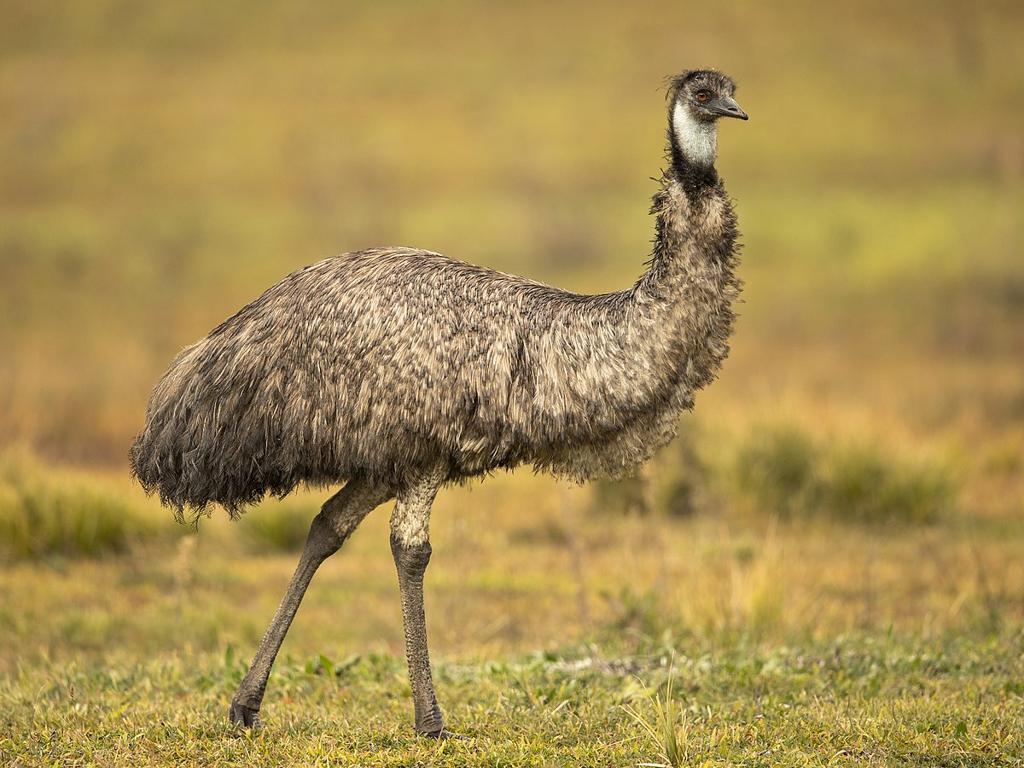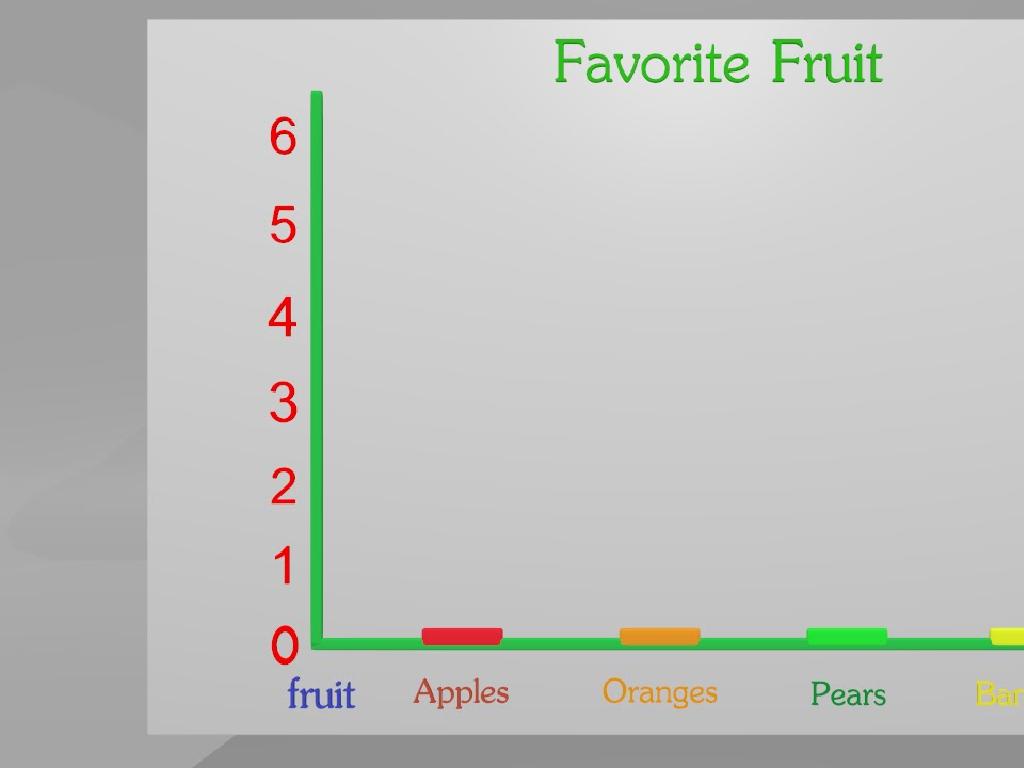Identify The Photosynthetic Organism
Subject: Science
Grade: Eighth grade
Topic: Photosynthesis
Please LOG IN to download the presentation. Access is available to registered users only.
View More Content
Welcome to Photosynthesis!
– Sun’s role in photosynthesis
– The sun provides energy for photosynthesis.
– Photosynthesis basics
– Process where plants convert light into energy.
– Plants as producers
– Plants make their own food using sunlight, water, and carbon dioxide.
– Photosynthesis equation
– 6CO2 + 6H2O + light energy C6H12O6 + 6O2.
|
This slide introduces the concept of photosynthesis, the process by which plants and other organisms convert light energy into chemical energy that can later be released to fuel the organisms’ activities. Emphasize the importance of the sun as the primary energy source for this process. Explain the basics of photosynthesis, including the role of chlorophyll and the chloroplasts found in plant cells. Discuss how plants are autotrophs, meaning they produce their own food, which is fundamental to the energy flow in ecosystems. Conclude with the photosynthesis chemical equation, which summarizes the reactants and products of this vital process. Encourage students to think of plants as energy converters that sustain life on Earth.
Exploring Photosynthesis
– Define photosynthesis
– Photosynthesis is how plants make their food using sunlight.
– Photosynthesis equation
– 6CO2 + 6H2O + light energy C6H12O6 + 6O2 represents the process.
– Ecosystem reliance on photosynthesis
– Plants produce oxygen and glucose, crucial for life.
– Photosynthesis significance
– It’s the foundation of food chains and oxygen production.
|
This slide introduces the concept of photosynthesis, a critical process for life on Earth. Begin with the definition, ensuring students understand that photosynthesis is the method by which plants, algae, and some bacteria convert light energy into chemical energy, producing glucose and oxygen as byproducts. Highlight the photosynthesis equation as the chemical representation of this process. Discuss the importance of photosynthesis in maintaining the balance of ecosystems, as it is the primary source of organic matter for the growth of plants and, by extension, all other organisms in the food chain. Emphasize its significance in producing the oxygen we breathe and in regulating atmospheric CO2 levels. Engage students by discussing how this process impacts their daily lives and the environment.
Identifying Photosynthetic Organisms
– Beyond plants: algae and bacteria
– Photosynthesis isn’t exclusive to plants; algae and some bacteria also use it.
– Traits of photosynthetic life
– These organisms have chloroplasts or similar structures to capture light energy.
– Chlorophyll’s vital role
– Chlorophyll is the green pigment crucial for absorbing sunlight.
– Photosynthesis in ecosystems
– They produce oxygen and form the base of food chains.
|
This slide aims to broaden the students’ understanding that photosynthesis is not just a plant process but also occurs in algae and certain bacteria. Highlight the characteristics common to all photosynthetic organisms, such as the presence of chlorophyll or similar pigments, and structures that capture light. Emphasize the importance of chlorophyll in the process of photosynthesis, as it allows organisms to absorb the necessary sunlight to convert carbon dioxide and water into glucose and oxygen. Discuss the ecological role of photosynthetic organisms in producing oxygen and serving as foundational producers in food chains. Encourage students to think about the diversity of photosynthetic organisms and their importance to life on Earth.
Identifying Photosynthetic Organisms
– Characteristics of photosynthetic organisms
– Organisms that convert light into energy
– Chlorophyll: The green pigment
– Chlorophyll is essential for photosynthesis
– Common examples in nature
– Plants, algae, and some bacteria
– Observing photosynthesis in daily life
– Plants in gardens or parks, algae in ponds
|
This slide aims to help students identify organisms capable of photosynthesis. Start by discussing the key characteristics such as the ability to convert light energy into chemical energy. Emphasize the importance of chlorophyll, the green pigment found in the chloroplasts of these organisms, which is crucial for the photosynthesis process. Provide examples like common plants, algae in water bodies, and photosynthetic bacteria. Encourage students to observe their surroundings, like gardens or ponds, to find real-life examples of photosynthetic organisms. This will enhance their understanding of the concept and its application in the natural world.
Photosynthesis in Action: Observing Real-Life Examples
– Explore real-life photosynthesis
– Plants, algae, and some bacteria use photosynthesis
– Conduct photosynthesis experiments
– Simple experiments can show photosynthesis effects
– Perform the Leaf Starch Test
– This test reveals starch presence in leaves as evidence of photosynthesis
– Understand photosynthesis impact
|
This slide aims to engage students with hands-on learning about photosynthesis. Start by discussing how plants, algae, and certain bacteria are capable of photosynthesis, providing real-world examples such as trees producing oxygen or algae supporting aquatic life. Introduce simple experiments that can demonstrate the effects of photosynthesis, such as observing oxygen bubbles from aquatic plants in sunlight. The Leaf Starch Test is a class activity where iodine solution is used to test leaves for starch, which is produced by photosynthesis. This experiment visually reinforces the concept that photosynthesis is essential for plant growth and survival. Encourage students to think critically about the importance of photosynthesis in ecosystems and our own lives.
The Impact of Photosynthesis
– Photosynthesis produces oxygen
– Plants convert CO2 into O2, vital for respiration
– It’s crucial for the food chain
– Plants are primary producers, supporting life
– Humans rely on photosynthetic organisms
– We depend on plants for food, oxygen, and more
– Balances Earth’s carbon dioxide
– Photosynthesis helps regulate atmospheric CO2 levels
|
This slide aims to highlight the significance of photosynthesis in maintaining life on Earth. Photosynthesis is not just a process for plants to make food; it’s a cornerstone for life, producing the oxygen we breathe and forming the base of the food chain. Students should understand that without photosynthetic organisms, ecosystems would collapse, and human life would be unsustainable. Emphasize the role of photosynthesis in carbon cycling, and how it affects global climate patterns. Encourage students to think about how their lives are directly and indirectly linked to the process of photosynthesis.
Class Activity: Exploring Photosynthesis
– Collect plant samples
– Observe under a microscope
– Use the microscope to find green chloroplasts, where photosynthesis happens
– Identify chloroplasts
– Discuss findings in groups
– Share what you’ve observed with your classmates and compare notes
|
This activity is designed to give students a hands-on experience with photosynthesis by observing real plant samples. Students should collect various plant leaves, preferably with different shades of green, to observe the chloroplasts under a microscope. The goal is to identify the chloroplasts, the site of photosynthesis within the cells. After observation, students will form groups to discuss their findings and draw conclusions about the relationship between chloroplasts and photosynthesis. As a teacher, facilitate the discussion by asking guiding questions and ensure that each group has access to a microscope. Possible variations of the activity could include comparing leaves from different environments, examining how chloroplasts appear in different plant types, or even using digital software to simulate the observation for schools without enough microscopes.
Photosynthesis: Conclusion and Recap
– Summarize photosynthesis key points
– Photosynthesis converts light energy into chemical energy, using CO2 and water.
– Review identifying photosynthetic organisms
– Look for green plants, algae, and some bacteria that contain chlorophyll.
– Engage in Q&A session
– Clarify doubts and questions
|
As we wrap up our lesson on photosynthesis, it’s important to revisit the core concepts. Start by summarizing the key points of photosynthesis, emphasizing the process of converting light energy into chemical energy, and the role of carbon dioxide and water. Then, review the characteristics that help identify photosynthetic organisms, such as the presence of chlorophyll and green coloration. Open the floor for a question and answer session, encouraging students to ask questions or express any confusion they may have. This will help ensure that all students have a solid understanding of the topic before moving on. Provide additional examples or explanations as needed to clarify any doubts.






